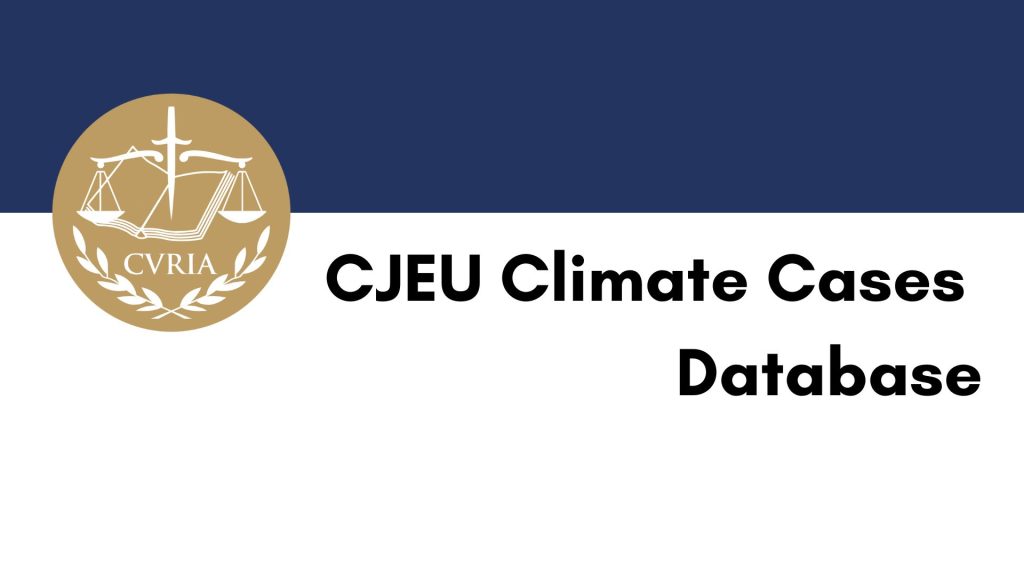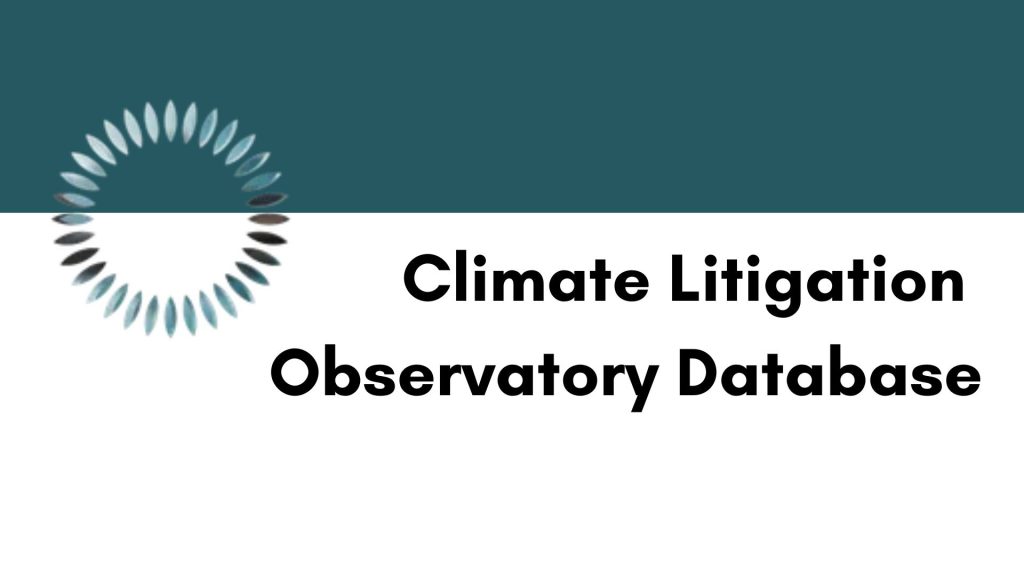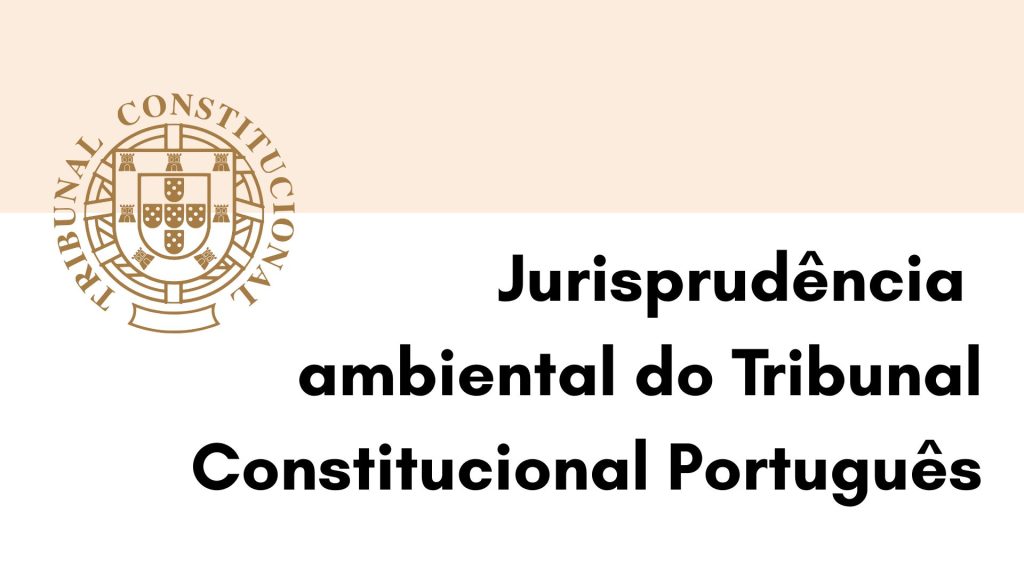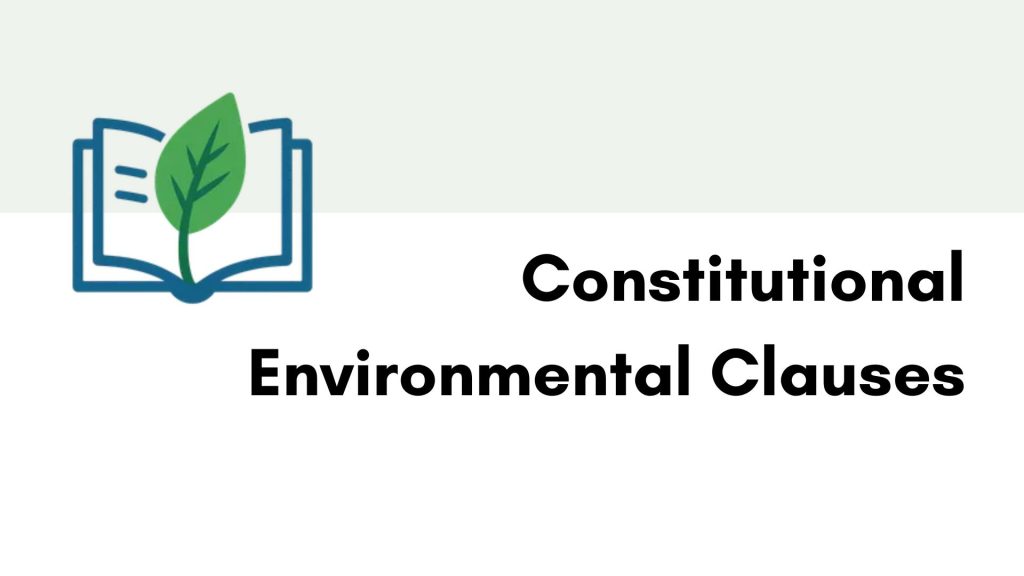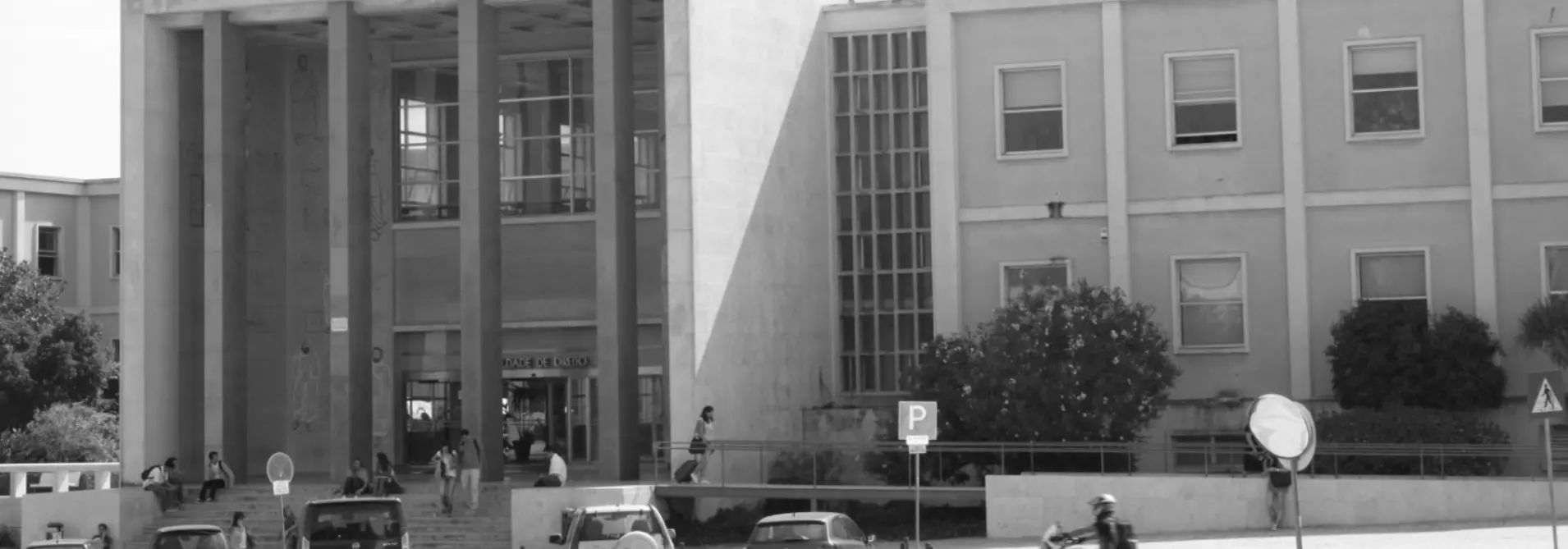Data Bases
The Lisbon Environmental Law is fully committed to open science.
Many of our works are published in open access, including books and working papers.
From 2024 onwards, we also began to offer databases that supported parts of our work, with the aim of accelerating research in environmental law and promoting verifiability and replicability.
Specific framework
How to cite
Lisbon Public Law Research Centre. CJEU Climate Cases Database (CJEU-CCD). Lisbon Environmental Law Cluster Databases. Available at: https://lisbonpubliclaw.pt/lisbon-environmental-law/data-bases/. Accessed: DD Month YYYY.
Overview
The CJEU Climate Cases Database (CJEU-CCD) is a structured, analytical dataset of climate-related judicial proceedings before the Court of Justice of the European Union (CJEU). As the first database fully focused on climate litigation at the EU’s highest court, it tracks how the Court frames, interprets and decides climate issues, helping users identify jurisprudential trends, strategic litigation patterns and institutional behavior across the Union’s supranational forum.
The project originated from the need for a quantitative and qualitative survey to support the research and writing of the chapter “Climate litigation before the Court of Justice of the European Union – A Quantitative and Qualitative Analysis of Features and Legal Grounds”, in Climate Change before International Courts: A Comparative Study (2025).
It reflects LEL-LPL’s commitment to open science, releasing, in open access, data that underpins academic and applied research on environmental law and EU climate governance.
Target audience
Researchers, judges and practitioners, policymakers, specialized journalists, and students.
Broader legal-environmental context
This dataset confirms the CJEU’s role in EU climate governance, with the EU ETS (Directive 2003/87/EC) as a dominant axis, while covering a broader spectrum of climate disputes: judicial review of legislative and implementing acts on emissions reduction; delineation of the scope and design of pricing and allocation instruments (including National Allocation Plans), alignment of transition policies with State aid control and internal market rules; infringement actions for failures of transposition or implementation; damages claims linked to compliance costs; and procedural issues of admissibility and access to justice in climate cases.
Cross-cutting principles and standards (proportionality, legal certainty, legitimate expectations, the polluter-pays principle and the requirement of a high level of environmental protection) recur in the Court’s reasoning to calibrate institutional competences, articulate obligations for Member States and operators, and ultimately assess the real-world effectiveness of the Union’s climate policies.
Methodology
The dataset was assembled through systematic searches on Eur-Lex and Curia portals across a broad time window. On Eur-Lex, “EU Court Case” was used as the reference document alongside Eurovoc terms (ENVIRONMENT > “Environmental policy” > “Climate Change Policy” and “Pollution control measures”; ENVIRONMENT > “Natural environment” > “Climate”), followed by qualitative screening to confirm climate relevance. Curia searches were used for validation and consolidation.
Each case is captured via standardized descriptors enabling comparable and replicable analysis: case title (with appeal phases in toggles), case number, year of application, date of decision/order, type of proceedings (annulment, preliminary ruling, damages, failure to act), Curia link, EU ETS flag, decision type (merits/admissibility), predominant area, brought by, EU countries/bodies, applicable EU legislation, climate-friendly outcome, summary, issues (keywords), related cases, strategic litigation/relevant precedent, plus joined cases identification and appeal cross-references, where applicable.
How to use
Three complementary views support different workflows:
– Gallery of Suits | visual browsing
– Table of Suits | comparison, filtering, search and export
– Chart View | share of EU ETS vs. non-ETS cases
Creative Commons license
CJEU Climate Cases Database (CJEU-CCD) © 2025 by Lisbon Environmental Law Cluster – Lisbon Public Law Research Centre is licensed under CC BY-NC 4.0
How to cite
Lisbon Public Law Research Centre. Climate Litigation Observatory (CLO). Lisbon Environmental Law Cluster Databases. Available at: https://lisbonpubliclaw.pt/lisbon-environmental-law/data-bases/. Accessed: DD Month YYYY.
Overview
The Climate Litigation Observatory (CLO) is a dynamic database of climate litigation cases across multiple jurisdictions. It is not intended to be exhaustive: its function is to identify and map emerging trends, legal arguments, and patterns of judicial activity related to climate, enabling users to explore interconnections between cases and to understand broader developments in global climate litigation. The added value of the CLO lies in its advanced classification system and keyword mapping, which allow for the cross-referencing of descriptors and comparative reading of decisions across different countries and regions.
The CLO was developed within the framework of the Projeto Climate Litigation Observatory (LPL), which seeks to analyze, from a public law perspective, disruptive legal problems revealed by climate litigation, particularly in fundamental and human rights and in administrative law, in a context of diffuse, cross-border and long-term harms, marked by significant epistemic uncertainty. One of the objectives of the Project was precisely the creation of this public database.
Target audience
Researchers, judges and legal practitioners, policymakers, specialized journalists, and students.
Broader legal-environmental context
Climate litigation has become a transversal field of public and private law, mobilizing constitutional principles, human rights, and administrative duties of planning, implementing and supervising climate policies. At the international level, the Paris Agreement provides the teleological framework (climate neutrality, long-term goals, ambition cycles) through which national and regional courts have been elaborating state obligations and corporate responsibilities, while domestic climate laws and sectoral regimes function as “bridges” for judicial review of acts and omissions affecting mitigation and adaptation. Recent landmark rulings, such as those affirming positive duties of climate protection under fundamental rights, as well as emblematic cases of state liability (e.g., Urgenda v. Netherlands) and corporate responsibility (e.g., Milieudefensie v. Shell), illustrate the migration of climate debates into judicial and quasi-judicial arenas, with structuring impacts on legislation, regulation, and business strategies.
The CLO Database was conceived to map this comparative ecosystem, allowing users to cross descriptors, keywords, and legal instruments to identify trends, recurring controversies, and jurisprudential inflection points that inform research and the design of public policies in environmental law.
Methodology
The CLO is a curated database resulting from a multi-pronged process of case collection and validation. Cases were initially mapped from widely recognized repositories such as the Sabin Center (Columbia Law School) and the CLX Toolkit, and were then complemented by active searches on official court websites and in news portals. From this initial universe, a qualitative screening was conducted to confirm climate relevance and eliminate duplicates, followed by an in-depth analysis of each case to prepare summaries and catalogue them according to a standardized descriptive schema ensuring comparability and reusability of the data.
Each record includes the URL of the decision and access to key documents (Google Drive), the reference number, country/territory, geographical area, court, date (filing or final ruling), keywords that capture legal, factual or thematic issues, the type of action (against governments, corporations, or individuals), an APA citation, related cases (linked thematically, procedurally or by actors), an impact assessment (High/Medium/Low), the status of the suit (pending, decided, dismissed), and the legal acts (national or international) invoked. The editorial process includes cross-checking sources and terminological harmonization, preserving the coherence of the taxonomy and enabling combined filtering, longitudinal thematic reading, and extraction of tailored subsets for external analysis (for instance, statistical or qualitative research).
How to use
The CLO provides three complementary views, each serving different purposes and which may be used sequentially.
- The Gallery of Suits offers a first visual exploration by cards, useful for quick recognition of the collection and discovery of cases by theme.
- The Status of Suits presents an interactive visualization by procedural status (pending, decided, dismissed), suitable for mapping case timelines and prioritizing reading.
- The Table of Suits functions as a full spreadsheet for comparison, search, filtering with multiple descriptors (for example, combining Country/Territory with Keywords and Type of Suit), and exporting results for further analysis.
An effective workflow is to start with the table, apply combined filters according to the research objective (e.g., “claims against governments based on fundamental rights within a given region”), and then use the Relevance property to prioritize reading.
Creative Commons license
Climate Litigation Observatory (CLO) © 2025 by Lisbon Environmental Law Cluster – Lisbon Public Law Research Centre is licensed under CC BY-NC 4.0.
How to cite
Lisbon Public Law Research Centre. Jurisprudência Ambiental do Tribunal Constitucional (JATC). Lisbon Environmental Law Cluster Databases. Available at: https://lisbonpubliclaw.pt/lisbon-environmental-law/data-bases/. Accessed: DD Month YYYY.
Overview
The Jurisprudência Ambiental do Tribunal Constitucional (JATC) compiles and systematizes 114 decisions of Portugal’s Constitutional Court containing relevant references to environmental protection. It is the first database devoted exclusively to the constitutional treatment of environmental issues in Portugal, enabling a critical and structured reading of the Court’s role in shaping the constitutional right to the environment. The initiative is driven by the need to build critical mass in Environmental Law, supporting the training of jurists and judges in an area where specifically environmental cases before the Court are still incipient. Case selection drew on the Court’s official jurisprudence database, using indexed search terms such as “ambiente,” “direito ao ambiente,” “LBA,” “ONGAs,” and “proteção ambiental.”
Target audience
Researchers, judges and legal practitioners, policymakers, specialized journalists, and students.
Broader legal-environmental context
Constitutional environmental case law in Portugal operates at the intersection of fundamental rights, state duties of protection, and principles of administrative and economic organisation, reflecting tensions between legislative discretion, reserve of law and the effective protection of the right to the environment (Article 66 of the Constitution).
The decisions mapped by JATC show how the Court, across different types of review (abstract, concrete and preventive) and procedural species, has balanced the right to the environment with other constitutional rights and goods, such as property, freedom of expression and spatial planning, sometimes densifying the right to the environment and sometimes arbitrating conflicts of rights and divisions of legislative and administrative competences.
Methodology
Case collection relied on the official jurisprudence database of the Constitutional Court, retrieving all decisions indexed with the terms “ambiente,” “direito ao ambiente,” “LBA,” “ONGAs” and “proteção ambiental,” which were adopted because they reflect the taxonomy made available by the Court’s website at the time of the searches. From that initial corpus, the team conducted qualitative screening to confirm environmental relevance and then carried out in-depth analysis to produce summaries and catalogue entries under a standardised descriptive schema.
Each record includes, inter alia, the procedural species, type of review, year, case number, section (or full bench), reporting justice, date of decision, tags and central themes, an impact assessment (High/Medium/Low), related cases, the issue in dispute, applicant’s arguments and counter-arguments, the Court’s ruling, the environmental focus (central/incidental/neutral), the environmental outcome (favourable/unfavourable/undetermined), the rights effectively protected, the applicable legal instruments, and the constitutional provisions invoked, as well as a direct link to the official case page and a citation reference. The editorial workflow involves cross-checking sources and terminological harmonisation to ensure coherence, comparability and the possibility of combined filters and longitudinal, theme-based reading.
How to use
JATC offers three complementary views designed for different stages of research.
- The Table of Cases provides the most comprehensive matrix, where users can search, compare and filter by any descriptor (for example, combining Procedural Species with Environmental Focus and Environmental Outcome).
- The Timeline of Decisions enables a chronological reading, useful for spotting phases and shifts in jurisprudential orientation.
- The Thematic Chart aggregates central themes, helping to visualise topic patterns.
A practical path is to start from the Table of Cases ,to define the subset (e.g., decisions with a central environmental focus and favourable outcome within a given period), open the Website link for the judgment, and then use Related Cases to reconstruct argumentative lines and consolidate the legal literature review.
Creative Commons license
Jurisprudência Ambiental do Tribunal Constitucional (JATC) © 2025 by Lisbon Environmental Law Cluster – Lisbon Public Law Research Centre is licensed under CC BY-NC 4.0.
How to cite
Lisbon Public Law Research Centre. Constitutional Environmental Clauses (CEC). . Lisbon Environmental Law Cluster Databases. Available at: https://lisbonpubliclaw.pt/lisbon-environmental-law/data-bases/. Accessed: DD Month YYYY.
Overview
The Constitutional Environmental Clauses (CEC) database compiles data from 194 national constitutions currently in force, mapping how environmental matters are addressed across constitutional systems, with particular emphasis on the right to a healthy environment, environmental protection, and access to information. The database enables comparison across regions and EU membership status, helping identify patterns of constitutional recognition and protection gaps. Its added value lies in a standardised classification and clause-based coding, which support comparative reading and targeted extraction for legal research.
Target audience
Researchers, judges and legal practitioners, policymakers, specialized journalists, and students.
Broader legal-environmental context
Over recent decades, the constitutionalisation of environmental protection has become a structuring vector of fundamental rights, protection principles and state duties, alongside procedural guarantees such as access to information and public participation.
The explicit recognition of a right to environment and of environmental protection clauses, often paired with prevention and remediation duties, shapes constitutional review of public policies, regulatory design and the jurisprudential development of protection standards.
By systematising such clauses, CEC supplies an empirical baseline for comparative analysis and for tracking global trends in green constitutionalism.
Methodology
CEC was assembled through a systematic survey of the Constitute Project (a global repository of constitutions in force with full text and topic indexing), complemented by active searches to validate and update the relevant provisions. For each constitution, explicit references to environmental information, environmental protection, right to environment, and general access to information were identified and recorded, together with a link to the current constitutional text.
Based on the presence/absence of those four clauses, an Environmental Protection Score (0-4) was assigned as a summary indicator of the breadth of constitutional protection. The editorial process includes cross-checking, terminological harmonisation and a change log to preserve traceability and comparability.
How to use
CEC provides three complementary views tailored to distinct workflows.
- The Gallery View displays 194 countries by flag, grouped by region, for initial visual exploration.
- The Table View offers a spreadsheet-style interface for comparison, search and filtering across descriptors (e.g., Region, EU Member or presence of specific clauses), and for exporting subsets.
- The Graphics View gives an immediate picture of how many countries do (or do not) include a Right to Environment Clause, useful for communication and rapid diagnostics.
A practical workflow is to start with Table View, apply chained filters (by region and clause type), open the Constitution Link to confirm official wording, and, where relevant, build comparative series using the Environmental Protection Score.
Creative Commons license
Constitutional Environmental Clauses (CEC) © 2025 by Lisbon Environmental Law Cluster – Lisbon Public Law Research Centre is licensed under CC BY-NC 4.0.


